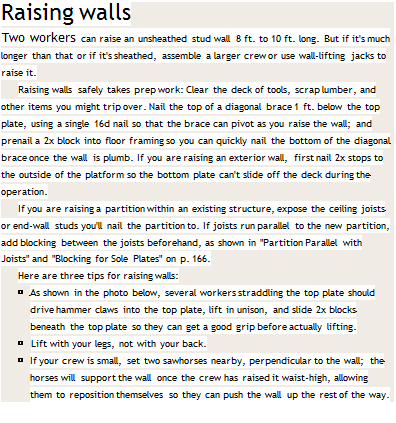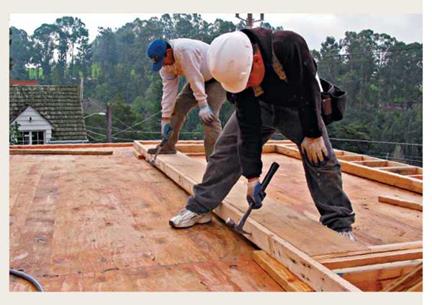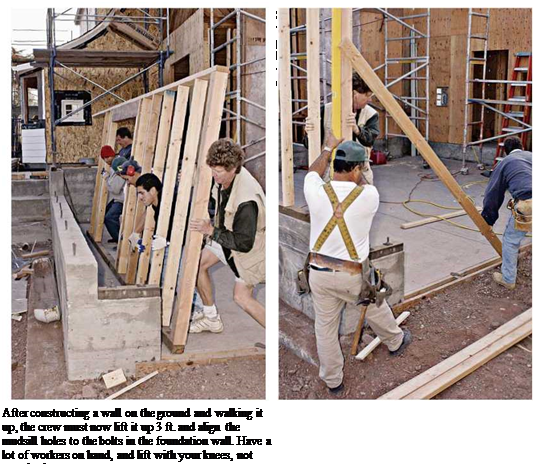. PLUMBING AND SECURING THE WALL
Once the wall is up, nail the bottom of the brace so the wall will stay upright as you fine-tune its position. Use a sledgehammer to tap the sole plate till it aligns with your chalkline on the floor. As you adjust, continuously check for plumb, using a 6-ft. level. If you unnail the brace to plumb the wall, have workers support the wall until you’ve renailed it.
Once the bottom plate lines up with the chalkline, drive two or three 20d nails through the plate, into the joists or blocking below, so the wall can’t drift. Methods for securing the top of the wall vary. If you’re framing an addition and have wide-open space, typically two walls intersecting at right angles are raised, plumbed, and braced, and then tied together by overlapping top plates.

 But if you’re raising a partition in an existing room, you’ll usually nail the top plate to ceiling joists. Invariably, space is tight indoors, and you’ll often need to gently sledgehammer the partition into place, alternating blows between top and sole plates till the wall is plumb. Alternatively, you can gain room to maneuver by first nailing the upper 2×4 of a doubled top plate to the exposed ceiling joists—use two 16d nails per joist—before raising the wall. Tilt up the wall, slide it beneath the upper top plate, plumb the wall, and then face-nail the top plates together using two 16d nails per stud bay. Finally, finish
But if you’re raising a partition in an existing room, you’ll usually nail the top plate to ceiling joists. Invariably, space is tight indoors, and you’ll often need to gently sledgehammer the partition into place, alternating blows between top and sole plates till the wall is plumb. Alternatively, you can gain room to maneuver by first nailing the upper 2×4 of a doubled top plate to the exposed ceiling joists—use two 16d nails per joist—before raising the wall. Tilt up the wall, slide it beneath the upper top plate, plumb the wall, and then face-nail the top plates together using two 16d nails per stud bay. Finally, finish

nailing the sole plates, driving two 16d nails into the joists or blocking below. In the corners, use 10d or 12d nails to toenail the corner studs to blocking or existing studs; use 16d nails if you can face-nail them. Adding blocking to existing framing is discussed on p. 165.






Leave a reply